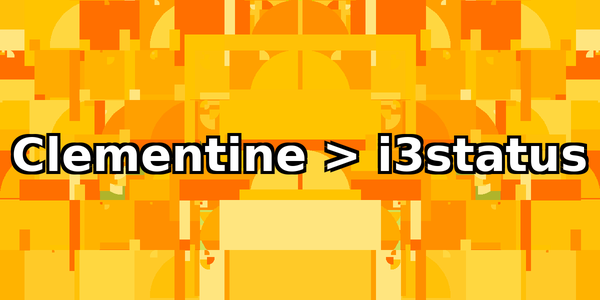m7c1
Much by way of discourse, some by way of advice; security from Clausewitz to Fancy Bear.
_image.png)
After a brief hiatus, we're back! Today, we'll look at how to perform a 'deep copy' of structures in JavaScript. We'll look at a couple of different out-of-the-box solutions and then roll our own recursive solution. This tutorial will also provide some background on the difference between copying by reference and by value in JS, and the difference between 'deep' and 'shallow' copies.

In this tutorial, we'll cover how to create an encrypted container on Linux. We'll also cover how to integrate its use into your environment. You can think of this space as a safe, which you can open, store things in or read things from, and then close again. Additionally, some of the techniques used to do this are generally quite valuable. Among them are the ability to create files of arbitrary sizes, and create links that allow arbitrary scripts to be run as you would any other installed program.

Today we'll cover how to use the dbus interprocess communication (IPC) mechanism to integrate the Clementine music player into i3status. We'll write a small script in Python that determines Clementine's state using the dbus library, and then appends that state to the i3status bar. This tutorial is really a corollary to the Linux Environment Setup 0x05: Integrating mpd into i3status using i3bar post we wrote a few months back, and will make use of some of the same code. Save swapping mpd for Clementine, the final result will be nearly identical:

Many websites use a system of user verification that requires everyone who signs up to provide an email address, and then click a link sent to them to 'activate' their account. Though simple, this is an effective way to limit bogus account creation, and provide some security for your user-based web service. In this tutorial we'll cover how to set up such a registration process using PHP and MySQL. It's simple! We'll write just a little bit of HTML to create forms, and then use PHP to code for the logic of what we want to happen. A basic understanding of PHP, HTML and MySQL is all that's needed to follow along.

In this fifth installment of our ongoing Linux tutorial series, we're going to customize our i3 experience by modifying i3bar's output! We're going to integrate our MPD music backend (the setup of which we covered here), into i3bar. We'll make use of some freely available code, and write a little python of our own.
Quick Links
Search
Tags
Popular Posts
 Buffer Overflow 0x01
Buffer Overflow 0x01
A step by step buffer overflow tutorial. We'll cover why buffer overflows exist, how they can be abused to subvert flow of control, and step though an example exploitation in Linux using GDB. Tor and "Invisibility"
Tor and "Invisibility"
Misconstruing Tor as a cloak of invisibility is dangerous. Curation
Curation
How can we continue to protect ourselves in an era defined by ubiquitous data collection? Curation! (Ab)using Tor to circumvent GDPR
(Ab)using Tor to circumvent GDPR
Utilize Tor to circumvent GDPR in Europe.